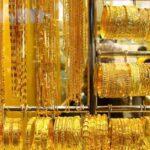In an interview with Hürriyet newspaper, Central Bank Governor Gaye Erkan said, “5 percent of the population goes to foreign currency for reasons I still cannot understand. Because it is mathematically absurd for them to switch to foreign currency at such an interest rate.” This situation, which the Central Bank governor finds absurd, shows how strong dollarization, that is, the flight from the lira, has become in Turkey in recent years.
Moreover, the flight from the lira was accelerated to a significant extent by the Central Bank under the name of “liraization”. As a result of the monetary policy pursued, negative real interest rates were introduced, inflation exploded, there was a currency shock and the lira lost its appeal. It was a period in which those who were in foreign currency won but those who stayed in lira lost.
The foreign currency-protected deposits (KKM) invented in this period were considered by the authorities as “TRY savings instruments” and the resulting picture was presented to us as the liraization of the economy. At a time when the country was trying to understand the KKM, we told that “trusting the TRY means investing your savings in TRY deposits or other TRY-denominated debt instruments. KKM does not mean trusting the Turkish Lira; they are the choice of investors who are stuck in foreign currency and cannot break away from foreign currency.” We said that the KKM scheme is not to protect TRY depositors, but to relieve foreign currency depositors who are accustomed to keeping their money in foreign currency.
Now we see that the CBRT Governor is also explaining that the KKM is not TRY deposits. She said “From now on, we will look at TRY deposits, not TRY + KKM divided by total deposits. TRY deposits divided by total deposits is our target.” And pointing out that the ratio of TRY deposits to total deposits was 30 percent when she took office, she says: “This had to be increased.”
The share of foreign currency deposits in the system, including KKM deposits, hovers around 60 percent. This ratio is a clear indicator of the extent of dollarization. There is an ossified mass in Turkey that insists on keeping their savings in foreign currency. Even in the best times of the economy, this share hovered around 35 percent. Unless a meaningful real interest rate is offered to this group, there is no solution. As a matter of fact, as the policy rate, which had lost its meaning during the “liraization” period, became more in line with the economic reality, we have seen that there has been an upswing and a shift from KKM to TRY deposits.
“My goal is to realize the transition to the Turkish Lira.” CBRT Governor says: “This is one of the main duties of every central bank governor. In Turkey, the CBRT is the sole issuer of banknotes. And the symbol of the Turkish Lira, looks like an anchor. The anchor-like symbol emphasizes that the Turkish Lira has become a “safe haven” as a store of value. The upward slope of the parallel lines symbolizes the “stable and rising value” of the Turkish Lira and the Turkish economy. The prerequisite for these concepts not to remain on paper is the transition to the Turkish Lira.”
Tendency to switch to TL
Since the Central Bank’s change of stance, we see that the shift to the Turkish Lira has begun. According to the figures provided by Gaye Erkan, Turkish Lira deposits have increased by TRY 1.5 trillion since the beginning of September, and the KKM has decreased by TRY 650 billion. Foreign Currency Deposit Accounts have shrunk by USD 4 billion. These are positive developments, but there is still a long way to go to reach the desired level of liraization. Ten years ago, 40 percent of deposits were in foreign currency and 60 percent in Turkish Lira. We need to at least return to that point.
The road map is clear: Ending dollarization and achieving liraization. The prescription for this is also clear: It is to give the national currency credibility and attractiveness. This is possible through macroeconomic stability, a strong institutional structure and the establishment of trust. Macro stability requires price stability and a realistic interest rate policy. For the currency appreciation trend to continue, sound monetary and fiscal policies must be implemented and confidence in these policies must be increased.







